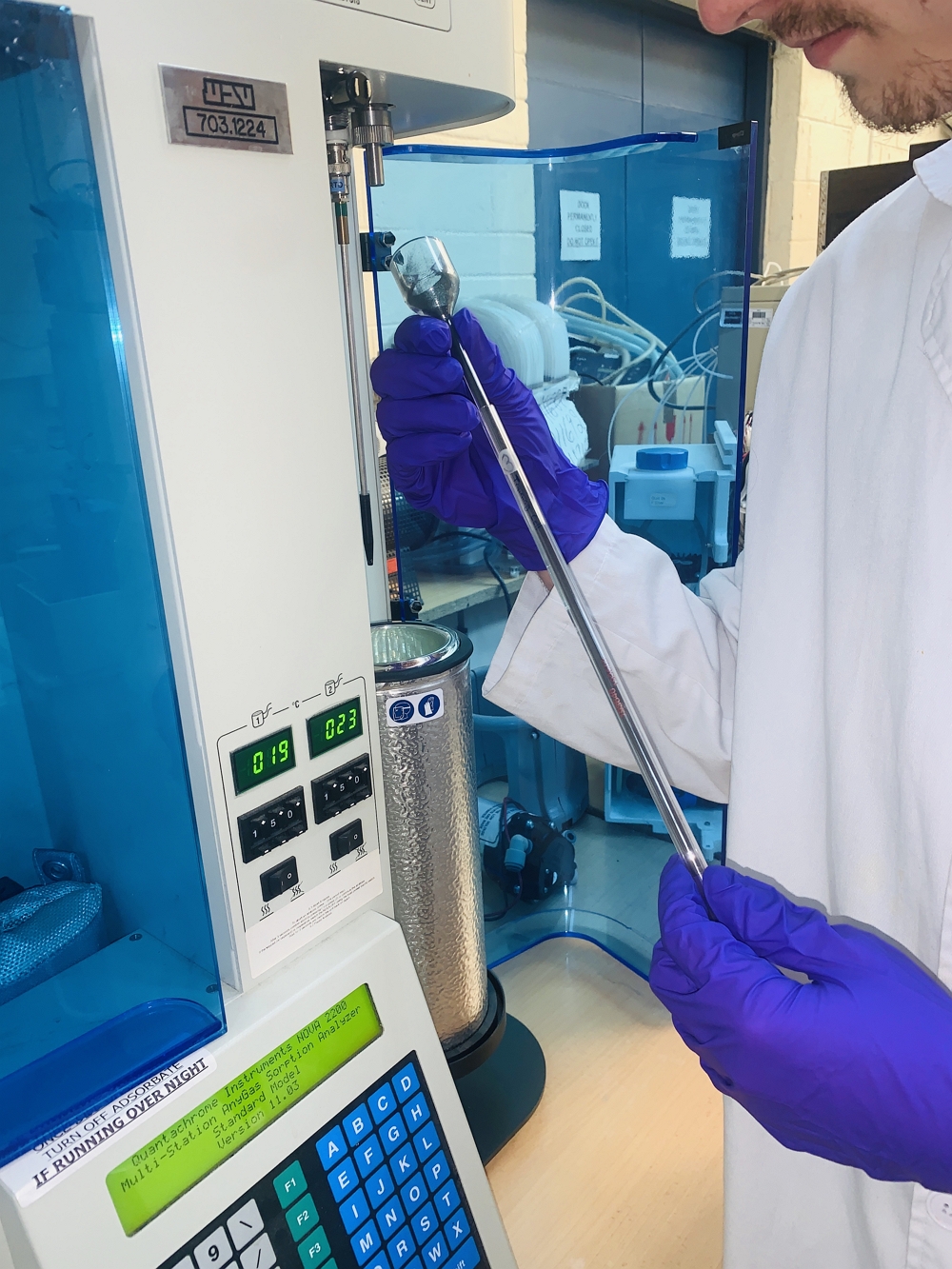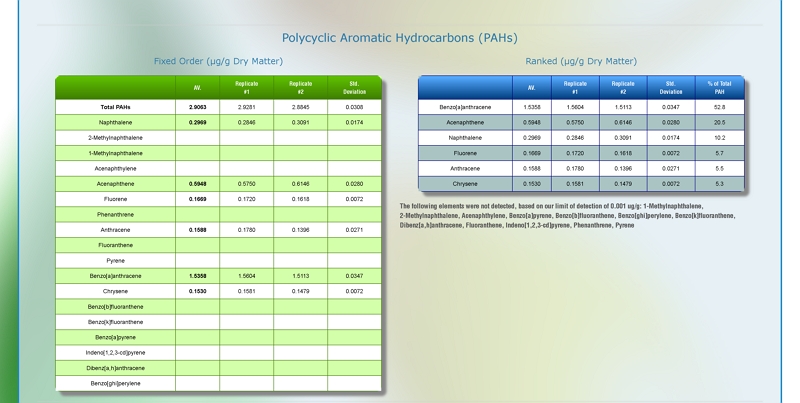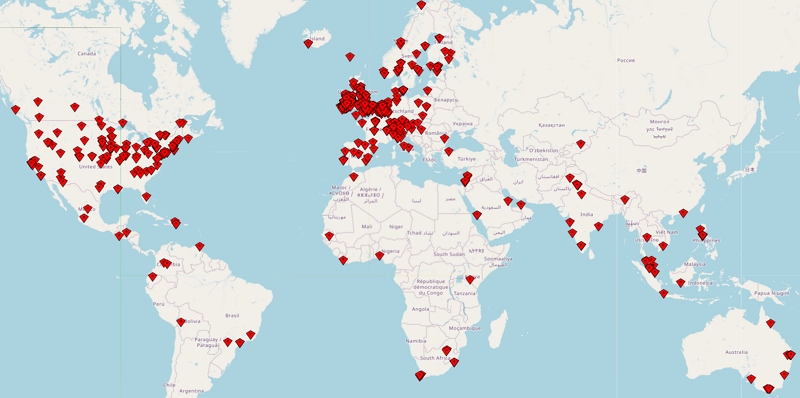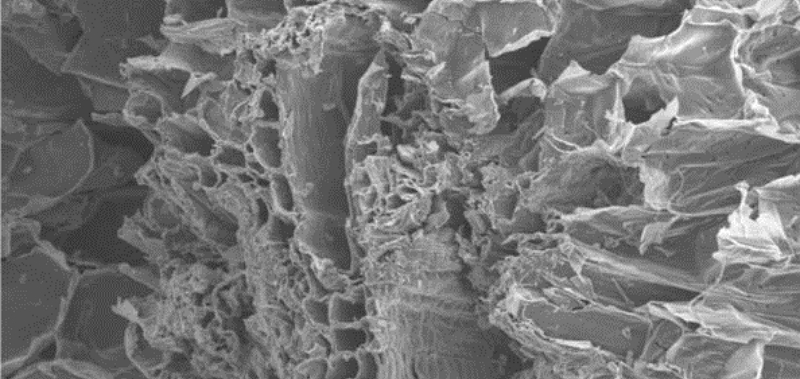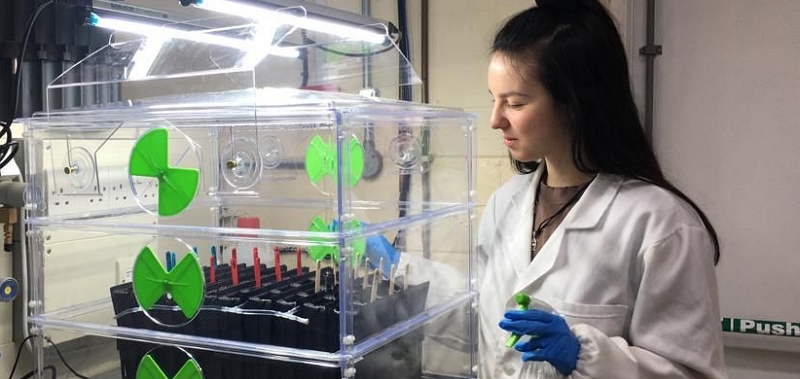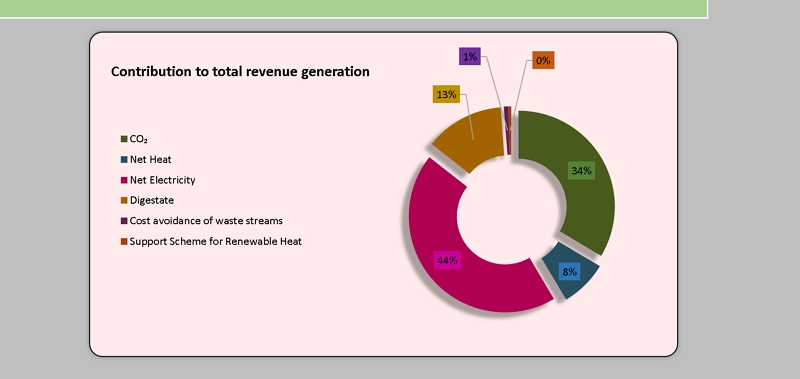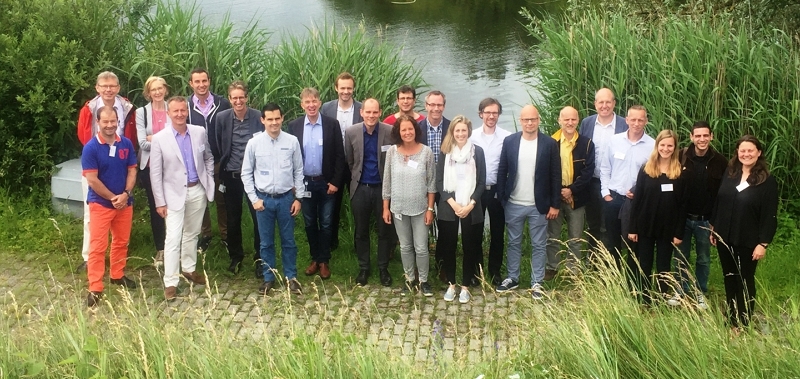Analysis of Surface Area and Pore Size Distribution in Biochar
However, not all pyrolysis processes result in a competitive porous material. This is because there are numerous variables that can impact the porosity of the sample. These include: the type of feedstock, the pretreatment, process conditions, the presence of ash or condensates clogging the pores, and the selected activation method. Therefore, a sample obtained after pyrolysis-like processes needs to be analysed to determine its surface area and pore size distribution in order to reveal the true porous nature of the sample and its most suitable application. We determine the surface area and pore size distribution of carbonaceous samples using a Quantachrome NOVA-e Series 2200e analyser which has been designed to satisfy the procedures outlined in EBC (2012-2022) 'European Biochar Certificate - Guidelines for a Sustainable Production of Biochar.' European Biochar Foundation (EBC), Arbaz, Switzerland. Version 10.1 from 10th Jan 2022.
We also determine the pore size distribution of the samples by the Quenched Solid Density Functional Theory (QSDFT) which is a method that, coupled with computer simulations, provides an accurate description of micro- and mesoporous carbons based on the sorption and phase behaviour of fluids in narrow pores on a molecular level. Furthermore, we provide an interpretation of the sample isotherm for supporting the data obtained from the surface area and pore size distribution analysis.
Click here to read in more detail about these different analysis methods.
Biochar Applications Based on Surface Areas and Porosities
Low Surface Areas
- Defined as a surface area of less than 250 m2/g.
- Soil Amendment - Biochar as a soil additive can improve the fertility, chemistry, and microbial community of the soil. Biochar also contains major and minor elements that are beneficial for plant growing such as nitrogen, potassium, calcium and phosphorus. In addition, biochar can moderate acidic soils, and can also improve the cation exchange capacity of the soil.
- Combustion - Virgin biomass has low heating values due to its high moisture, low energy density, high bulk density, and hygroscopic nature. However, pyrolysed biomass like biochar has higher calorific value and therefore can be used as a solid biofuel for heat and electricity generation.
- Construction Material - Such biochar can be used as a material additive for the construction sector and has the potential to both reduce the high carbon footprint of construction materials as well as to upgrade the physical properties of common construction materials such as thermal conductivity, low flammability and chemical stability.
- Batteries - Biochar with low surface area have the potential to be used for lithium-ion batteries or for the production of supercapacitors. Moreover, amorphous carbons like biochar can be used for making anodes in silicon batteries. Likewise, graphitic carbon nanosheets that are a high added-value product used in electronic devices.
Moderate Surface Areas
- Defined as a surface area of between 250 and 500 m2/g.
- Plant Growth Promotion - Biochar mixed with soil and compost reduces the bulk density of the soil and increases soil porosity and water holding capacity which improves plant growing rates and ultimately crop yield. Moreover, moderate to high surface area biochar holds water for a longer time reducing the irrigation cycles needed per season.
- Composting - Biochar as a compost additive enhances the water holding capacity and aeration of the compost which accelerates the compost production time. Furthermore, biochar has also been used for reducing the gas emissions from the compost which significantly reduces the bad odours associated with domestic compost production.
- Water Treatment - Such biochar can also be used for purifying domestic water in developing countries lacking safe and continuous water supplies. Additionally, biochar can be used to remove pollutants from water, including bacteria, methylene blue, organic waste and inorganics like phosphates and nitrates.
- Tar Removal - During pyrolysis recalcitrant pollutants known as tars are produced. These tars represent a problem since they can cause blockages in the downstream pipelines of the pyrolysis equipment. However, biochar can potentially be used as a catalyst for reducing the formation of such tars.
High Surface Areas
- Defined as a surface area of more than 500 m2/g.
- Pollution Cleanup - Biochar with a high surface area has an adsorption capacity comparable to activated carbon, which makes it suitable as a remediation agent for removing heavy metals such as iron, lead, copper, zinc, and cadmium. However, it should be considered that biochar's absorption capacity not only depends on its surface area because its chemical structure defines its chemical affinity which it's a critical factor for the efficiency of the application.
- Air Cleanup - Biochar can be used as a purification agent in air purification systems for heavy indoor pollution like in the case of industrial activities.
- Capture of CO2 - High surface area biochar can also be used for capturing and storing carbon dioxide through physisorption by making use of biochar for designing carbon nanotubes or carbon molecular sieves.
- Biodiesel Production - Biochar can also be used as a catalyst during the transesterification and esterification process of turning waste oil into biodiesel for alleviating system contamination from pollutants such as sulphur deposition.
- Anaerobic Digestion - High surface-area biochar can also be used in anaerobic digestors for removal of H2S from the combustible gases matrix. Removal of H2S is critical for upgrading the production of biogas. In addition, biochar can improve the hydrogen and methane percentage in the biogas. On the other hand, biochar can also be used in anaerobic digestion for controlling the presence of heavy metals which can represent a threat for the microbial community of the digestor.
The smallest number of datapoints that can be collected are 5 (in analysis package P360) which is insufficent to determine the pore size distribution of the sample. However, package P364 uses 20 datapoints and package P366 uses 40 datapoints, allowing for the analysis of porosity, with an increasing number of datapoints providing improved accuracy in the surface area and porosity analysis.
The analysis can also be done using CO2 as the absorbate for getting an even higher resolution description of the smallest micropores (less than 1.5nm) which are commonly present in carbonaceous materials, such as biochar or activated carbons.
At Celignis we provide highly comprehensive reports for the surface-area and porosity analysis of samples. These reports are provided online, on the Celignis Database, as soon as we obtain the results, as well as in detailed Excel and pdf reports that are provided once the order has been completed. The Celignis Database includes interactive charts, like the examples provided on this page, as well as detailed summary statistics. The final reports also incldue these results along with interpretations of the data, personally written by trained members of the Celignis team.
Particle Size, Bulk Density, Specific Surface Area (Nitrogen Gas Adsorption), BET Isotherm (40 Point Using Nitrogen), Pore Volume (Using Nitrogen), Pore Size Distribution (Using Nitrogen), Pore Size Distribution (Using CO2), BET Isotherm (20 Point Using Carbon Dioxide), Specific Surface Area (CO2 Gas Adsorption), Pore Volume (Using CO2), Average Pore Width (Using Nitrogen), Average Pore Width (Using CO2)
Thernogram - Under Nitrogen, Thermogram - Under Air, Moisture, Inherent Moisture, Ash Content (815C), Carbon, Hydrogen, Nitrogen, Sulphur, Oxygen, Organic Carbon, Inorganic Carbon, Chlorine, Volatile Matter, Fixed Carbon, Specific Surface Area (Nitrogen Gas Adsorption), Calcium, Iron, Magnesium, Phosphorus, Potassium, Silicon, Sodium, Titanium, Gross Calorific Value, Net Calorific Value, Ash Shrinkage Starting Temperature (Reducing), Ash Deformation Temperature (Reducing), Ash Hemisphere Temperature (Reducing), Ash Flow Temperature (Reducing)
Global Recognition as Biomass and Biochar Experts
Feedstock Evaluation
Biochar Production
Biochar Analysis
Biochar Combustion Properties
Soil Amendment & Plant Growth Trials
Analysis of PAHs in Biochar
Thermogravimetric Analysis of Biochar
Biochar Upgrading
Biochar for Carbon Sequestration
Technoeconomic Analyses of Biochar Projects
Research Project Collaborations
Hydrothermal carbonization (HTC) research has mainly focused on primary char production, with limited attention to secondary char, which is formed through polymerization and condensation of dissolved organic compounds in the liquid phase. This research aims to address this gap via an experimental investigation of the impact of stirring on the mass and carbon balance of HTC reaction products, surface functional groups, and surface morphology of secondary char, using fructose as a model compound. A 3D hydrodynamic simulation model was developed for a two-liter HTC stirred reactor. The experimental results indicated that stirring did not significantly influence the pH, mass, carbon balance, and surface functional groups of secondary char produced under the range of experimental conditions (180 C, 10% biomass to water (B/W) ratio, and a residence time of 0-120 min) studied. Nonetheless, it was observed that a stirring rate of 200 rpm influenced the morphology and shape of the secondary char microspheres, leading to a significant increase in their size i.e., from 1-2 um in unstirred conditions compared with 70 um at a stirring rate of 200 rpm. This increase in size was attributed to the aggregation of microspheres into irregular aggregates at stirring rates > 65 rpm and residence times > 1 h. The hydrodynamic model revealed that high turbulence of Re > 104 and velocities > 0.17 m s-1 correlated with regions of secondary char formation, emphasizing their role in particle aggregation. Particle aggregation is significant above a stirring rate of 65 rpm, which corresponds to the onset of turbulent flow in the reactor. Finally, a mechanism is proposed, based on reactor hydrodynamics under stirred conditions, that explains secondary char deposition on the reactor walls and stirrer. | |
A dried dairy processing sludge (sludge from wastewater treatment of an effluent from a milk processing plant) was pyrolysed in a single-particle reactor at different temperatures from 400 C to 900 C. NH3 and HCN were measured online and offline by means of FTIR as well as by cumulative sampling in impinger bottles (in 0.05 M H2SO4 and 1 M NaOH, respectively) and analysed by photometric method. NO and NO2 were measured online using a nitric oxide analyser while N2O was measured by FTIR. Nitrogen (N) in the sludge and in the remaining char, char-N, was determined. Moreover, tar content in pyrolysis gas was measured and tar-N was determined. The results with respect to N mass balance closure are discussed. The different measurements techniques are compared. For pyrolysis at 520 and 700 nitrogen in the gas phase was mainly contained as N2 (36 % and 40 % respectively), followed by NH3 (15 % and 18 %), tar-N (10 % and 9 %), HCN (1 % and 3 %), NO (1 %) and NO2 (0.2 %). The dairy processing sludge has very specific properties with organic-N present predominantly as proteins and a high content of inherent Ca. These characteristics affected the distribution of N. The amount of char-N was higher while the amount of tar-N lower than for sewage sludge from literature, at comparable pyrolysis temperature. | |
Dairy processing sludge (DPS) is a byproduct generated in wastewater treatment plants located in dairy (milk) processing companies (waste activated sludge). DPS presents challenges in terms of its management (as biosolids) due to its high moisture content, prolonged storage required, uncontrolled nutrient loss and accumulation of certain substances in soil in the proximity of dairy companies. This study investigates the potential of hydrothermal carbonization (HTC) for recovery of nutrients in the form of solid hydrochar (biochar) produced from DPS originating from four different dairy processing companies. The HTC tests were carried out at 160 C, 180 C, 200 C and 220 C, and a residence time of 1h. The elemental properties of hydrochars (biochars), the content of primary and secondary nutrients, as well as contaminants were examined. The transformation of phosphorus in DPS during HTC was investigated. The fraction of plant available phosphorus was determined. The properties of hydrochar (biochar) were compared against the European Union Fertilizing Products Regulation. The findings of this study demonstrate that the content of nutrient in hydrochars (biochars) meet the requirements for organo-mineral fertilizer with nitrogen and phosphorus as the declared nutrients (13.9-26.7%). Further research on plant growth and field tests are needed to fully assess the agronomic potential of HTC hydrochar (biochar). | |
Disposal of waste-activated sludge [dairy processing sludge, (DPS)] from wastewater treatment plants located in milk processing companies is an increasing concern. DPS is usually applied to farmlands in the vicinity of the dairy companies. This practice is becoming unsustainable due to uncontrolled nutrient loss and potential soil contamination. We propose to recover nutrients in the form of biochar. This paper examines the properties of biochars obtained from slow pyrolysis of DPS. DPS samples were pyrolyzed at laboratory and pilot scale at 600 and 700 C. The elemental properties of biochars, the content of primary and secondary nutrients, as well as contaminants were examined and compared against the European Union Fertilizing Products Regulation. The biochars meet the specified limits for hydrogen-to-organic carbon ratio, chloride, and polycyclic aromatic hydrocarbons intended for gasification and pyrolysis component category materials. In six out of eight biochars, the content of phosphorus (P) as a single declared nutrient and the level of contaminants meet those required for an organo-mineral fertilizer. Only two biochars meet the required concentrations of nitrogen, phosphorus, and potassium. A minimum solid content of 30% in DPS is required to make the process of biochar production energetically sustainable. | |
Anaerobically digested sewage sludge mixed with forest residues was pyrolysed at 800 C, at laboratory and pilot scale. The study quantified differences in char and gas yields for tests carried out in a simple fixed bed laboratory reactor and rotating retort pyrolyser at pilot scale, when the residence time of feedstock was 10 min in both cases. The yield of char from pilot scale was 4 % lower than from laboratory scale while the yield of gas was 15.7 % higher. During the pilot scale pyrolysis of anaerobically digested sewage sludge blended with forest residues the gas quality for energy recovery applications was assessed and the fate of impurities (tar, NH3 and H2S) was investigated. The raw pyrolysis gas contained 14.6 g/Nm3 of tar, 36.9 g/Nm3 of NH3 and 793 ppm of H2S. Sixteen N-containing tar species were identified of which pyridine, propenenitrile, 2-methyl-, benzonitrile, and indole are found to be the most abundant. The yield of N-containing tar compounds accounted for approx. 12 % of total tar content. Conditioned pyrolysis gas contained 7.1 g/Nm3 of tar, 0.036 g/Nm3 of NH3 and 119 ppm of H2S. Benzene was by far the most abundant tar compound followed by toluene and styrene. The specifications of the used internal combustion engine were exceeded due to the sum of tar compounds such as fluorantrene and pyrene with 4+ aromatic rings (at 0.0015 g/Nm3) and NH3 content The effectiveness and sustainability of energy recovery in wastewater treatment can be improved using forest industry by-products. | |
Adsorption of six contaminants of emerging concern (CECs) - caffeine, chloramphenicol, carbamazepine, bisphenol A, diclofenac, and triclosan - from a multicomponent solution was studied using activated biochars obtained from three lignocellulosic feedstocks: wheat straw, softwood, and peach stones. Structural parameters related to the porosity and ash content of activated biochar and the hydrophobic properties of the CECs were found to influence the adsorption efficiency. For straw and softwood biochar, activation resulted in a more developed mesoporosity, whereas activation of peach stone biochar increased only the microporosity. The most hydrophilic CECs studied, caffeine and chloramphenicol, displayed the highest adsorption (22.8 and 11.3 mg g-1) onto activated wheat straw biochar which had the highest ash content of the studied adsorbents (20 wt%). Adsorption of bisphenol A and triclosan, both relatively hydrophobic substances, was highest (31.6 and 30.2 mg g-1) onto activated biochar from softwood, which displayed a well-developed mesoporosity and low ash content. | |
Magnetic carbons can significantly lower the costs of wastewater treatment due to easy separation of the adsorbent. However, current production techniques often involve the use of chlorinated or sulfonated Fe precursors with an inherent potential for secondary pollution. In this study, ochre, an iron-rich waste stream was investigated as a sustainable Fe source to produce magnetic activated biochar from two agricultural feedstocks, softwood and wheat straw. Fe doping resulted in significant shifts in pyrolysis yield distribution with increased gas yields (+50%) and gas energy content (+40%) lowering the energy costs for production. Physical activation transformed ochre to magnetite/maghemite resulting in activated magnetic biochars and led to a 4-fold increase in the adsorption capacities for two common micropollutants - caffeine and fluconazole. The results show that Fe doping not only benefits the adsorbent properties but also the production process, leading the way to sustainable carbon adsorbents. | |
The majority of the sludge from the treatment of wastewater in milk processing plants is land spread. The drawbacks of land spreading include local oversupply due to high transport costs, which results in sludge being spread on lands in the vicinity of the dairy factories. Local oversupply can lead to accumulation of certain substances in soil through annual application over many years. Therefore, in the long term, there is a need for alternative methods to recover energy and nutrients from increasing volumes of sludge generated from dairy processing. Pyrolysis offers a potential alternative to land spreading, which can reduce health and environmental risks, while providing an avenue for the recovery of energy and nutrients. Pyrolysis allows energy recovery in the form of a high calorific value pyrolysis gas and a char which may be used as a soil amendment. In this study pyrolysis of dried dairy sludge was carried out at pilot scale. The results indicate that a dried biological sludge can be successfully pyrolysed and when mixed with wood the resulting char meets European Biochar Certificate criteria regarding carbon content. Most of the initial energy content of the feedstock was retained in the pyrolysis gas prior to cleaning, 53%, compared to 34.5% in the char and 1.5% in the tar. For the pyrolysis gas after cleaning (mainly cracking in presence of air) the initial energy content of the feedstock retained in the gas was only slightly higher than that retained in the char, 39.2% versus 34.5%, while the tar accounted for 0.8% of the initial energy content. | |
Eucalypts can be very productive when intensively grown as short rotation woody crops (SRWC) for bioproducts. In Florida, USA, a fertilized, herbicided, and irrigated cultivar planted at 2471 trees/ha could produce over 58 green mt/ha/year in 3.7 years, and at 2071 trees/ha, its net present value (NPV) exceeded $750/ha at a 6% discount rate and stumpage price of $11.02/green mt. The same cultivar grown less intensively at three planting densities had the highest stand basal area at the highest density through 41 months, although individual tree diameter at breast height (DBH) was the smallest. In combination with an organic fertilizer, biochar improved soil properties, tree leaf nutrients, and tree growth within 11 months of application. Biochar produced from Eucalyptus and other species is a useful soil amendment that, especially in combination with an organic fertilizer, could improve soil physical and chemical properties and increase nutrient availability to enhance Eucalyptus tree nutrition and growth on soils. Eucalypts produce numerous naturally occurring bioproducts and are suitable feedstocks for many other biochemically or thermochemically derived bioproducts that could enhance the value of SRWCs. | |

